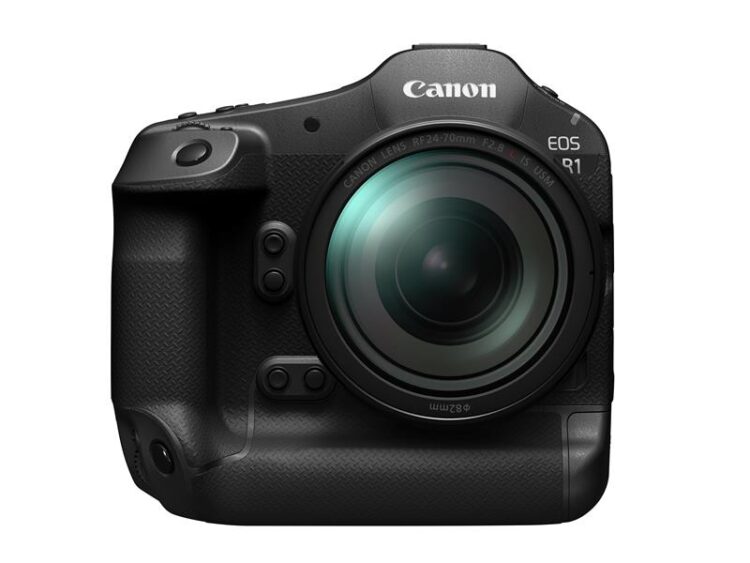
One of the most trusted sources Just share this, not able to configure what does this exactly mean
Ultra-high-speed and large-bandwidth RS (EOS R1) >> High-speed and large-bandwidth GS (A9M3) > High-speed and small-bandwidth RS (Z9\Z8\A1) > Medium-speed and large-bandwidth RS (EOS R3\X-H2S) >> Medium-speed and small bandwidth RS(A9) > Low-speed RS (stacked sensor for various monitoring purposes)
Let me know in the comments if u guys able to crack this
Get LIVE RUMORS –> FACEBOOK | TWITTER | INSTAGRAM to get live news + Canon rumors 24X7
source E8M_8888







The statement you provided appears to be comparing different types of image sensors used in high-end digital cameras, particularly those used in photography and videography. Here’s a breakdown of what each term means and how they relate to each other in the hierarchy provided:
Ultra-high-speed and large-bandwidth RS (EOS R1):
RS: Rolling Shutter
Ultra-high-speed: The sensor readout is extremely fast, reducing rolling shutter effects significantly.
Large-bandwidth: The sensor can handle a large amount of data quickly, which is beneficial for high-resolution and high-frame-rate shooting.
Example: Canon EOS R1
High-speed and large-bandwidth GS (A9M3):
GS: Global Shutter
High-speed: The sensor readout is very fast.
Large-bandwidth: The sensor can handle large data volumes quickly.
Example: Sony A9 Mark III
High-speed and small-bandwidth RS (Z9/Z8/A1):
RS: Rolling Shutter
High-speed: The sensor readout is very fast.
Small-bandwidth: The sensor handles less data at once compared to large-bandwidth sensors.
Examples: Nikon Z9, Nikon Z8, Sony A1
Medium-speed and large-bandwidth RS (EOS R3/X-H2S):
RS: Rolling Shutter
Medium-speed: The sensor readout is moderately fast.
Large-bandwidth: The sensor can handle large data volumes.
Examples: Canon EOS R3, Fujifilm X-H2S
Medium-speed and small-bandwidth RS (A9):
RS: Rolling Shutter
Medium-speed: The sensor readout is moderately fast.
Small-bandwidth: The sensor handles less data at once.
Example: Sony A9
Low-speed RS (stacked sensor for various monitoring purposes):
RS: Rolling Shutter
Low-speed: The sensor readout is slow.
Stacked sensor: A sensor design that layers components for improved performance but may be optimized for specific uses, such as monitoring rather than high-speed photography.
Explanation of Terms
Rolling Shutter (RS): A type of sensor readout where different parts of the sensor are exposed at different times. This can cause distortion in fast-moving subjects.
Global Shutter (GS): A type of sensor readout where the entire sensor is exposed at once, eliminating distortion from fast movement.
Bandwidth: Refers to the data handling capacity of the sensor. Large-bandwidth sensors can process more data per unit of time, which is advantageous for high-resolution and high-frame-rate imaging.
Speed: Refers to how quickly the sensor can read out the data. Higher speeds reduce rolling shutter effects and allow for faster shooting rates.
Hierarchy Interpretation
Ultra-high-speed and large-bandwidth sensors (like EOS R1) are at the top, indicating the best performance in terms of speed and data handling.
High-speed and large-bandwidth sensors (like A9M3) come next, providing excellent performance but potentially with some trade-offs compared to the ultra-high-speed sensors.
High-speed and small-bandwidth sensors (like Z9/Z8/A1) are still very fast but handle less data at once, making them slightly less capable in terms of overall performance.
Medium-speed and large-bandwidth sensors (like EOS R3/X-H2S) offer a balance between speed and data handling, suitable for high-quality imaging with moderate performance.
Medium-speed and small-bandwidth sensors (like A9) have moderate performance in both aspects, suitable for general high-speed photography.
Low-speed sensors are designed for specific applications where speed is less critical, such as monitoring.
This hierarchy helps photographers and videographers understand the capabilities and limitations of different camera sensors, guiding them in choosing the right equipment for their needs. As noted in the Digital Photography Review, advancements in sensor technology continue to push the boundaries of what’s possible in both still photography and videography.
Hope it helps
Thats why I always ask @Amy to open a camera news website
It means Canon RF sensor will be more fast the Sony Alpha A1 Global shutter sensor.. I think the source is Canon fanboy
@amy
@amy Any update on the Sony ZVE10 Mark II. We are well into June and no mention yet..
Ask Sony alpha rumor guy, he knows all na.. ok I know from day one its coming on July..
The Nikon Z6 III is expected to be announced between June 11th and 15th. If there are any unforeseen delays, the announcement will likely be pushed to the first week of July.